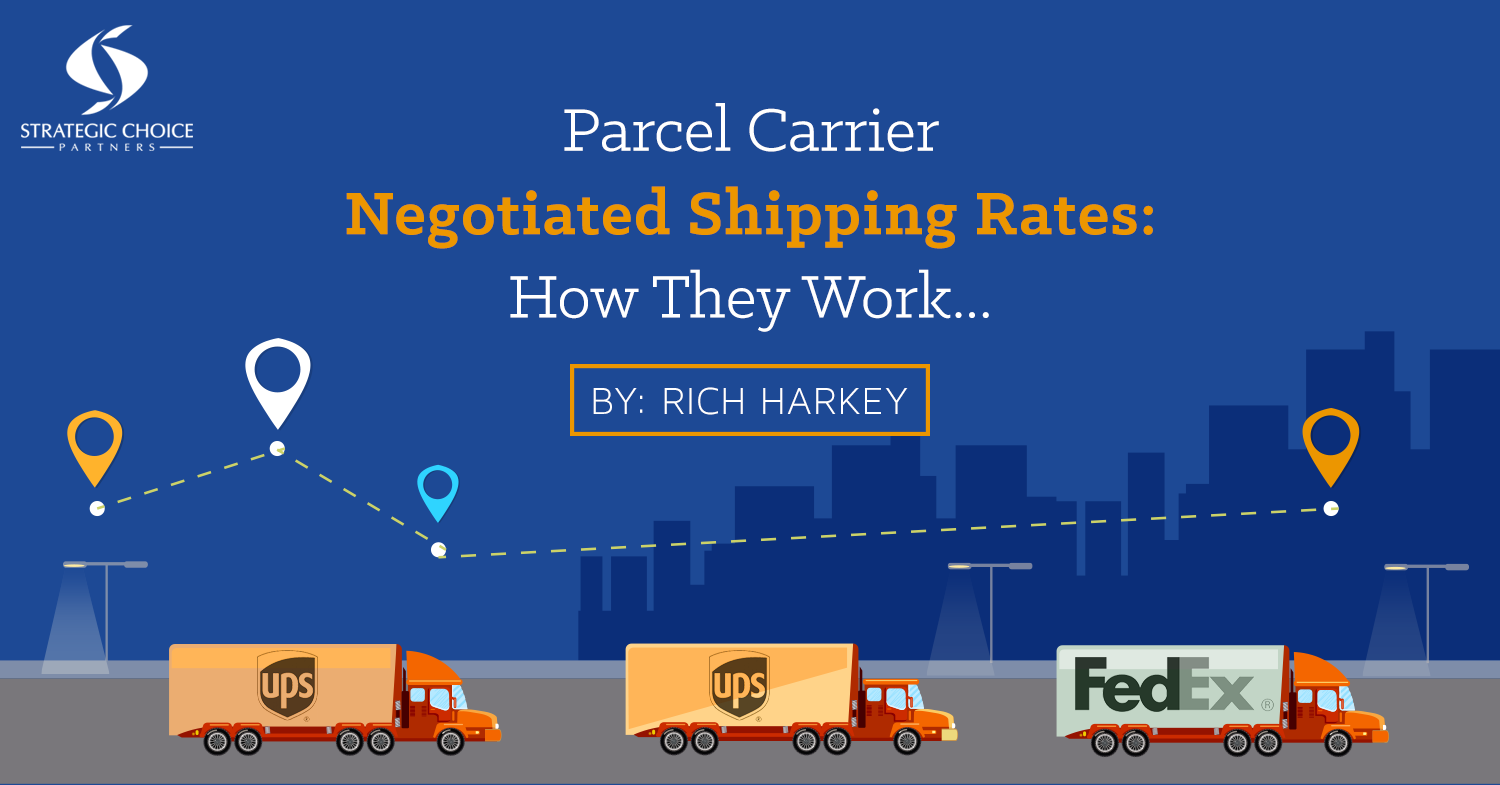
It’s 2018 and UPS and FedEx have once again raised their rates. If your business ships with UPS or FedEx, it is essential that you understand as much as possible about your negotiated parcel rates.
Companies that have already negotiated with UPS or FedEx could be paying up to 45% too much on their shipping if they don’t completely understand how the negotiated rates and the negotiation process work. And companies that have never negotiated could be paying up to 70% too much.
Who Qualifies?
When a company first signs up for a UPS or FedEx account, they are given the default standard rates. Over time and as volume grows, the account will qualify for discounts. There is no minimum volume to begin receiving discounts, but companies with more volume will see greater discounts.
How Rates Are Determined
There are many factors that UPS and FedEx will use to negotiate. The first factor to understand is that UPS and FedEx actually negotiate prices. Unlike other types of businesses, they do not have a standard pricing matrix. So, unfortunately, one cannot just go to their website and look for prices to see what type of volume that they need to ship to get better rates. UPS and FedEx will evaluate independently each and every account on how shipments will be discounted.
Once the process begins, they will use your shipping history combined with input from your team to anticipate your future shipping level. They are looking for trends not only in total volume but in certain categories and/or routes. Then based on a complete analysis they will offer discounts in certain areas that will lower your rates.
There are two strategies that they often use to offset account updates. The first is that they will set volume minimums to achieve the discounts. If you don’t ship as much as expected, then the account discount will not be granted. And secondly, they may not lower all categories or may add fees in different sub-categories. This is done so that should you send shipments in other areas that you did not focus on during the negotiation, they can make an additional margin that will offset the lower margin from the lower negotiated rates.
The Negotiation Process
To start the process of getting negotiated rates, the first step is to contact your UPS or FedEx representative and request an evaluation. Before doing anything, UPS and FedEx will likely contact you to schedule an in-person meeting. The first meeting will be a discovery meeting for your carrier representative to learn more about your business and shipping projections. Expect UPS and FedEx to come with more questions than answers at this first meeting.
An important note: Your account manager will be your contact person, however, negotiated rated are outside their control.
Every territory in the United States has a District and Regional Pricing Specialist who will do deep dive into your account history. You will continue to communicate with your account manager, but ultimately, this pricing specialist is the decision maker for the carriers.
Uploading New Rates
Once negotiated terms have been agreed upon and you have reviewed and signed the carrier contract, the burden falls on UPS and FedEx to upload your new discounted rates into their systems. While FedEx will post immediately, expect a bit longer for UPS. And don’t forget that the invoice change will coincide with your billing cycle.
It is also worth mentioning that your updates WILL NOT be visible until after they go into effect, and you will not be shipping with those rates until that time. This can be a major point of confusion when changes are not actualized immediately, so check your invoice carefully for the first 2-3 weeks.
Tips for Getting Better Results
Between all the different levels of service, all the different zones, and all the ancillary charges, there are literally hundreds of different types of rates. If you are going to negotiate on your own, be sure to consider and review all the different types of rates.
So many customers only focus on one part of the contract while they negotiate only to find out once the contract is in place that higher costs in other areas are offsetting the updates they made by negotiating.
Now What?
Do something! If you would like better rates, start by contacting your UPS or FedEx account representative. Then reach out to a third party parcel carrier negotiation company and they will give you a free account/ contract review and estimate how much they believe they can save you with negotiated rates.
Even if you decide to negotiate on your own, it doesn’t hurt to have an expert give you a free assessment. Then decide either to go it alone or work with a professional. The process will take some time to get started right away. Don’t leave that money sitting on the table any longer than necessary.
Related Resource
About Rich Harkey
 With 27 years of experience working in the transportation/logistics industry, Rich brings a wealth of experience, knowledge and perspective that is of great value to Strategic Choice Partners and its clients.
With 27 years of experience working in the transportation/logistics industry, Rich brings a wealth of experience, knowledge and perspective that is of great value to Strategic Choice Partners and its clients.
His goal within the transportation/logistics industry over the past 27 years has been to assist all clients to become more efficient and drive costs out of their systems. This has been achieved through Common Carrier Freight & Small Parcel Rate Negotiations, Customer Relations, Business Strategy Planning, Supply Chain Management, Fact Finding, and Vendor Compliance.
Learn more about Rich on his bio page, and contact us at info@strategicchoicepartners.com if you’d like to discuss how Rich and SCP can help your company.

Leave a Reply